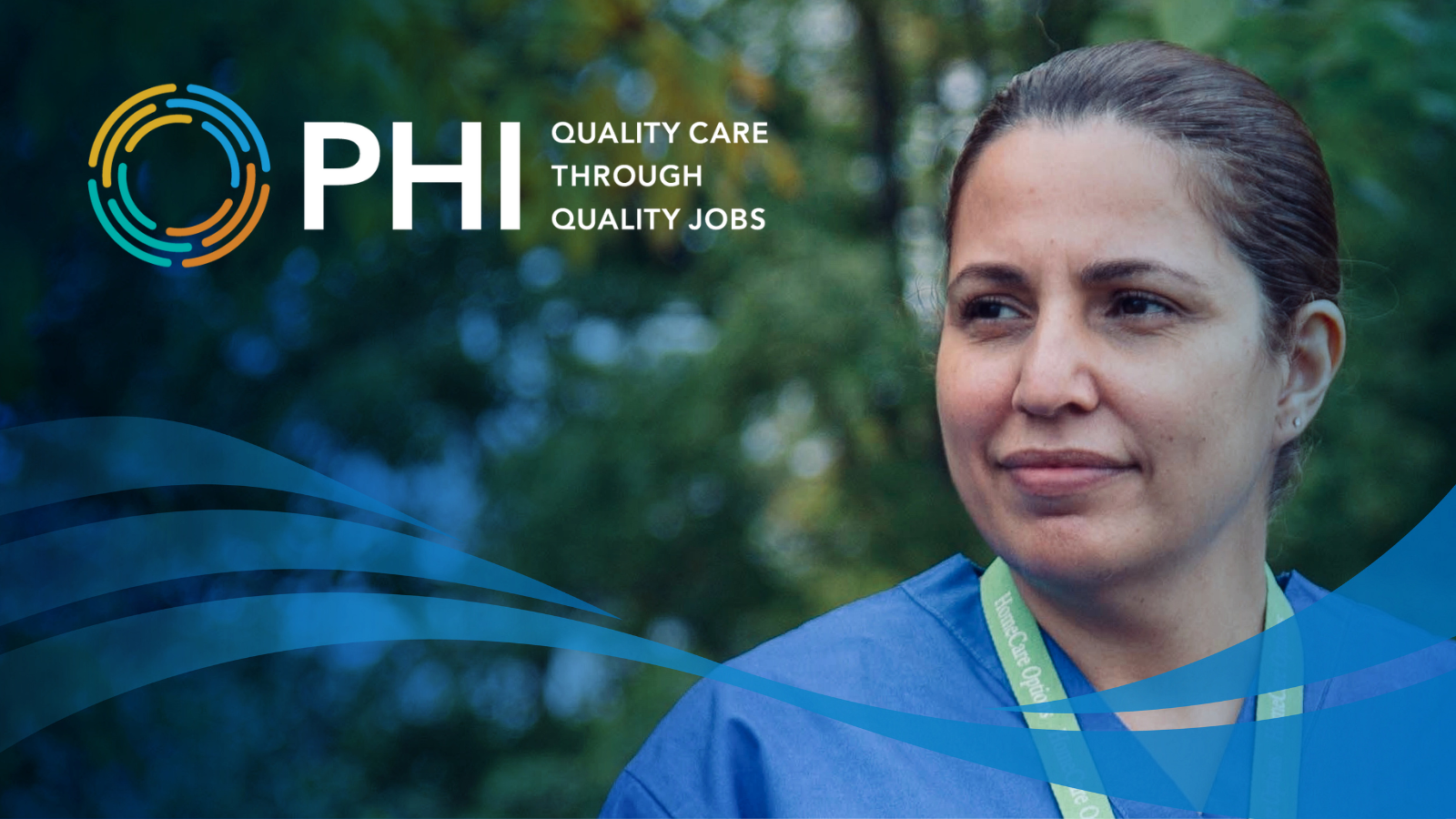PHI Applauds the Biden Administration’s Actions on Behalf of the Direct Care Workforce
 This week, the Biden Administration announced two historic final rules that will advance direct care worker job quality in significant ways. These actions align with the Administration’s continued recognition of the vital role direct care workers play in our nation’s long-term services and supports (LTSS) system and larger economy.
This week, the Biden Administration announced two historic final rules that will advance direct care worker job quality in significant ways. These actions align with the Administration’s continued recognition of the vital role direct care workers play in our nation’s long-term services and supports (LTSS) system and larger economy.
Direct care workers support older adults and individuals with disabilities across LTSS settings in the United States. Today, 4.8 million personal care aides, home health aides, and certified nursing assistants (CNAs) help clients and residents with critical daily activities. They provide vital support and respite to family caregivers, who are emotionally and financially strained by their own roles.
Direct care workers have struggled for decades to fulfill essential but exceedingly complex jobs— without sufficient training, compensation, career advancement, or recognition for their contributions. Understaffing and lack of adequate supervision add unnecessary risk in many settings.
The poor quality of direct care jobs prevents many LTSS providers from delivering optimal care and meeting demand. Many direct care workers struggle with part-time work and irregular schedules. In 2021, their median annual earnings were just $23,688, and nearly two in five lived at or below 200 percent of the federal poverty line. Because industries such as fast food and retail pay higher wages, and can often offer better schedules and less dangerous work, LTSS employers struggle to compete. As a result, retention (and recruitment) in this sector are in crisis.
At the same time, demand for direct care workers is growing substantially, as our population ages and acuity needs in LTSS settings increase. PHI’s research shows that LTSS employers will need to fill an estimated 9.3 million total job openings in direct care from 2021 to 2031.
Addressing the quality of direct care jobs is imperative to meeting growing demand. The two rules finalized this week are major steps in the right direction.
The Nursing Home Minimum Staffing Standard Rule
The Staffing Rule, finalized on April 22, represents the most significant nursing home regulatory reform in decades, addressing the intersection of job quality, workforce retention, and care quality in several important ways.
First, the Staffing Rule establishes a minimum staffing level of 3.48 hours per resident per day (HPRD), split between registered nurses (RNs) and CNAs, with leeway to also leverage time from licensed practical/vocational nurses. While this falls below the staffing level that many experts have proposed, it nevertheless establishes a baseline expectation for staffing levels needed to ensure workforce safety and provide the quality care residents deserve. Importantly, this is not a one-size-fits-all rule. Facilities will still be required to provide staffing beyond the minimum requirements when needed to meet residents’ needs.
The rule also requires nursing homes to have an RN on-site 24 hours a day, seven days a week, a vital step in effective supervision, workforce and resident safety, and ensuring that high-acuity care needs are met.
Recognizing how vital CNA compensation is to creating a stable, well-qualified workforce, the new Staffing Rule requires State Medicaid agencies to report annually on the percentage of payments for Medicaid-covered services in LTSS facilities spent on compensation for frontline staff.
The rule also requires nursing homes to develop and adhere to staffing plans to maximize employee recruitment/retention and solicit input from frontline staff as part of facility assessments, giving direct care workers a voice in ensuring that staffing levels meet resident needs.
Facilities seeking an exemption from the rule’s minimum staffing requirement must demonstrate good faith efforts to recruit and retain staff, including documenting the use of prevailing wage, job offers, and resources expended on staffing.
As states move towards implementation of the Staffing Rule, PHI recommends that the federal Centers for Medicare & Medicaid Services provide clear guidance to nursing homes about how to implement nationally recognized job quality standards in their staffing plans and take additional steps to address staffing shortages. Moving these changes forward will be a critical focus for technical assistance, and ongoing collaboration between policymakers, providers, and advocates.
The Ensuring Access to Medicaid Services Rule
The Access Rule, also released on April 22, is a critical effort to improve access to Medicaid services, including home and community-based services (HCBS), for millions of people. Multiple aspects of this rule, which also includes additional consumer protections, focus on addressing direct-care workforce compensation. The rule will require states to spend at least 80 percent of Medicaid payments for homemaker, home health aide, and personal care services on compensation for direct care workers.
The Access Rule includes key accountability measures around home care service expenditures through state reporting requirements and rate setting transparency. In addition, each state will now be required to create a home care rate-setting advisory group, to advise and consult on provider payment rates and direct compensation for direct care workers.
Combined, these measures will help assess the adequacy of both direct care worker compensation and provider rates – important steps toward addressing recruitment and retention challenges needed to ensure high-quality care for people and families across the United States, today and in the future.
Celebrating a Win… and Acknowledging the Work Ahead
For more than three decades, PHI has advocated for improvements to every aspect of direct care workforce jobs. With these historic rules, the Biden Administration has again demonstrated its commitment to improving direct care job quality and ensuring that our nation’s LTSS system can fulfill its mandate to deliver high-quality care and support.
We are grateful to see recommendations by PHI and other experts factored in finalizing these rules. As we take this moment to recognize these victories, we remain committed to working with the federal government, states, and providers to envision and implement transformational changes for the direct care workforce.






